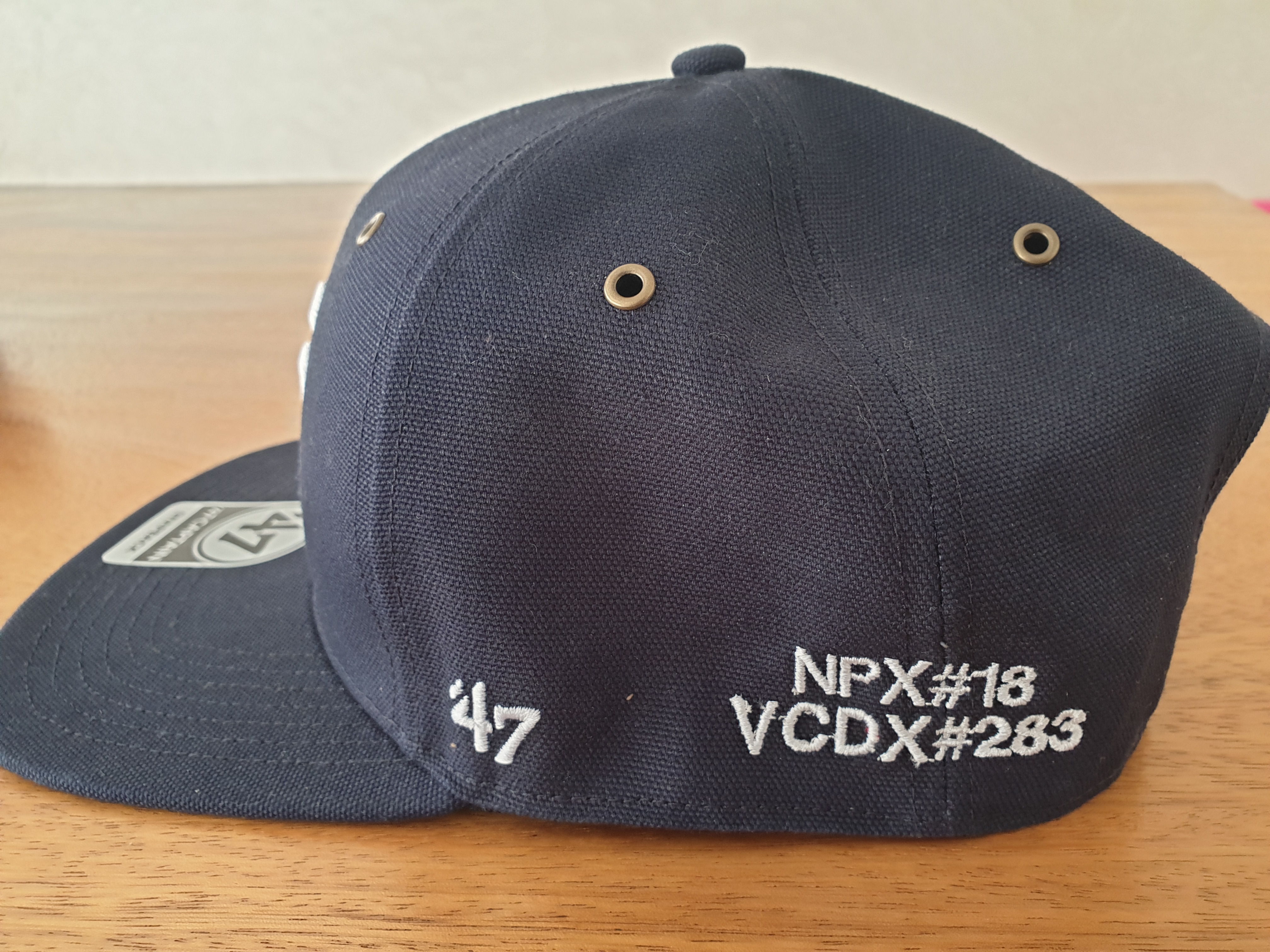This post follow a previous one where I give a big thank to the vCommunity :
Fouad EL AKKAD, NPX-18, and VCDX-283
For Reminder What are those Certifications ?
They are the highest level on VMware and Nutanix certification program, that refer to the Architect Skills sets.
In the Nutanix Program :
In The VMware Program :
It has been a little while since I had to take the time to write this post, so I am enjoying a trip to Las Vegas. => Casablanca to get me started.
There are several sources on the net, so the idea is not to put a study guide but rather to give you a little feedback with 2 – 3 tips.
First, we have to start with the “WHY” embark yourself on such an adventure.
If it is to earn more money, I will stop you right away it is unlikely that you will go to the end especially that there is another much more effective, but if it is for a challenge and the desire to complete your skills, then I can only encourage you.
For my story, it has been 2 – 3 years (2013 – 2016) with my office colleagues Igor Zecevic (@zecevicigor), Bilel Kamoun (@BILKAM2), and Alban Lecorps (@AlbanLecorps); we were collecting VCP certifications / NPP (Professional) then VCAP (Advanced): DCA (Administration) & DCD (Design).
At that time, I was an engineer at the City Hall of Paris, mainly with my hands in the technique to manage, administer, and ensure high availability, without having a business-oriented view.
I had the chance to attend a Nutanix Bootcamp in September 2016 set up for free (1001 Thanks to Nutanix) in Nutanix’s Amsterdam offices and intimidated into a room with a VCDX-DTM to my right (VDI) Jason Yeo and my left two VCDX-DCV (Datacenter) Derek Seaman and Michael Wilmsen
In addition, for coach Bas Rayman (NPX) and Magnus Anderson (Double VCDX DCV and Cloud).
And, there I discover a new world of IT-architect, or behind every technical decision, there is the “why”.
In short, during this boot camp we went through the different silos of the architecture (Compute, Storage, Network, and BC-DR) these having to meet the requirements of Availability, Management (scalability), Performance, Recovery, and Security, and so-called AMPRS.
We had to work in a group, respond to scenarios covering each of these silos, present them and especially with the “Why” Technical and Business.
A new horizon opened up for me. In IT like other sciences, the more you learn, the more you realize that you do not know that much.
Back at the office, I jump on my friend Igor Zecevic to board it with me. I had to insist on one week and come back to the charge by presenting him with the skeleton of an Index of the future documentation (which was ultimately far from reality) to convince him.
So here, we are on the starting blocks, with a very recent project carried out together that needs to be documented.
It took us about eight months of work about 1H to 2H per day on average to arrive at the final documentation. The idea was to make a documentary based on VMware and Nutanix (Yes it works superbly together) to be able to present it to the VCDX and NPX.
VCDX: 1st in June 2017, superb experience but failed, this is simply the apprehension of the format of the exam, not enough preparation, and technical + soft skills gap to solve.
VCDX: 2nd defense nine months later on April 2018, result which also Failed. However, with the feeling of being passed not very far, the hardest was the big disappointment of failure.
NPX: 1st defense in November 2018, with the experience of my two previous VCDX failures and a good preparation BOOOM, I picked up the NPX-18.
I say it’s a good goal achieved I should move on to something else, but quickly the unfinished feeling comes back with the VCDX still in mind
VCDX: 3rd defense in June 2019 (i.e., two years after my 1st defense) with more experience in soft skills (presentation, oral, objection management) certainly with the experience of my current position as a System engineer (pre-sale) at Nutanix.
And this time Re-BOOOM it has done, I get the VCDX 283.
Here is my story in short, now my advice:
- Do not be impressed: if I did it, others could do it. It is not just words; I went from a very technical engineer with little business knowledge to a much more complete engineer in terms of soft skills that can conduct advanced discussions with technical teams or more high level with C-Level.
- Have good time management: especially, be regular in your work progress not to lose the thread.
- Focus: if you are the type to quickly let go of projects you started yesterday, I am afraid this story is not for you.
- Community: One of the most important success factors is the great community on Twitter, slack, the people there will be happy to assist you in any way possible
- Trust on you: I remember in my documentation having made technical choices under the advice of people already VCDX, but in reality, it was not the right option and had to go back to my first choice because I knew the context and the requirements.
- Mentor: Choose a mentor and hire him from the beginning of your documentation to avoid, a bad methodology, doing an off-topic, or writing too much technical literature that is not necessary.
- Once the documentation is complete: the ideal thing in my opinion is not to quickly submit your document to Nutanix / VMware because once it is done, it is done.
I would rather do some mock (defense simulation) which will allow you to readjust your document in case of error, and inconsistency. - ENGLISH: For non-Native speakers. Documentation and oral defense are in English, no need to be bilingual but at least be able to manage a technical conversation easily and prepare to respond quickly with pre-constructed sentences to all the questions you had during your mocks.
Small FAQ:
NPX and VCDX , what is the difference?
Very similar in the approach and content, the big difference is:
VCDX: Oral 2 modules on the VMware stack
Defense: 75-minute presentation of the architecture of your documentation
Scenario: this is a 45-minutes session of White Boarding; simulate an architectural consulting meeting with a panel of VCDX playing the role of customers
NPX: Oral 3-module one the Nutanix SDS and 2 Hypervisors
Note that the Nutanix SDS solution is multi-Hypervisor (AHV – ESXi – Hyper-V)
Defense: 125-minutes presentation of the architecture of your documentation with your use case’s hypervisor
Scenario: Just like VCDX 60-minutes simulation with Whiteboarding but under a Hypervisor that differs from the one in your documentation.
Troubleshoot: 45-minutes session where you have to solve a technical or performance problem always under a Hypervisor that differs from the one in your documentation (but the same as the module of the scenario)
- How many pages minimum?
I would say at least 75/100 pages; for me, the difference comes from your experience. You can be super concise in your writing because you have the experience and technical background to answer any question quickly by justifying even if it is not in your document. If not, you can go further in your documentation to detail more and prepare for panel questions.
- How long does it take for documentation?
It all depends, but allow at least six months by being regular in the work.
- Can I have your document to see what it actually represents?
No, without even having to justify for a bunch of obvious reasons
- Where to start?
My advice would be to prepare and pass the VMware VCAP-DCD Design certification that will allow you to acquire the basics and jargons of design discussions.
Off Course the Blueprints:
NPX : https://www.nutanix.com/go/nutanix-platform-expert-npx
Then see the summary examples:
Derek Seaman:
NPX: https://www.derekseaman.com/2018/06/nutanix-npx-architecture-guide-how-to-part-1.html
VCDX: https://www.derekseaman.com/2014/10/sample-vcdx-dcv-architecture-outline.html
Gregg Robertson:
https://thesaffageek.co.uk/2017/05/15/vcdx-preparation-advice/
And an example of documentation provided by Duncan Epping:
Rene’s blog VCDX133 with a series of extremely useful articles.
VCDX : https://vcdx133.com/2015/01/27/vcdx-series/
NPX: https://vcdx133.com/2015/03/06/nutanix-platform-link-o-rama/
The same goes for Dereck Sieman blog:
https://www.derekseaman.com/2014/07/vcdx-link-o-rama.html
https://www.derekseaman.com/2018/04/my-journey-to-nutanix-platform-expert-npx-014.html
And Read everything you could find on the internet.
- After VCDX NPX, will I get a new villa and Tesla?
Uh not really do not expect fundamental changes but it all depends on your organization, this can clearly be a lever in some cases.






Leave A Comment